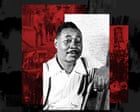Economic insecurity, race riots, incendiary media … Claude McKay was one of the few Black journalists covering a turbulent period that sounds all too familiar to us today
There was no greater vantage point to see America burn than the Pennsylvania railroad. Working in the summer of 1919 as a dining car waiter, Claude McKay was so fearful that he had resorted to travelling with a revolver secreted in his starched white jacket. During this volatile time, which became known as the US’s Red Summer, a wave of racial violence engulfed the country.
In a situation replicated across the western world, hundreds of thousands of first world war veterans had returned home and were now looking for work. Among them were Black troops who had fought for the allied powers and hoped that they would be awarded equal rights in return for their service. It was not to be.



















